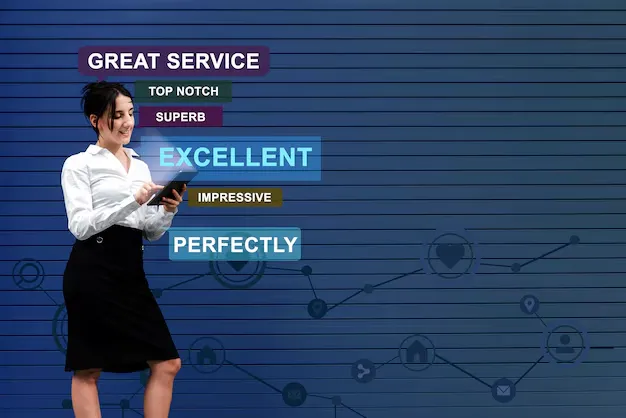When it comes to managing an LMS (Learning Management System) website, it’s easy to assume that after the initial setup and content upload, everything will run smoothly. However, the reality is quite different. Just like any other website or software system, your LMS requires continuous maintenance and updates to keep it running efficiently, securely, and relevant for your users.
This blog post will guide you through why ongoing maintenance is crucial for your LMS website, focusing on key aspects such as content updates, software updates, user feedback integration, and performance monitoring. By the end, you’ll understand how regular updates and maintenance ensure a superior learning experience and protect the integrity of your platform.

Why Ongoing Maintenance is Crucial for LMS Websites
An LMS platform isn’t just a static tool, it’s a dynamic environment that caters to learners, educators, and administrators. Whether you’re offering online courses, hosting corporate training sessions, or providing academic programs, the success of your LMS depends on its ability to evolve and adapt. This makes maintenance and updates not just important but essential for the longevity and success of your platform.
Suggested Posts:
Here are some key reasons why regular maintenance is crucial:
- Security: Ensuring that your LMS is protected from potential threats like hacking, malware, and data breaches is one of the most vital aspects of maintenance.
- User Satisfaction: Your users—whether learners, instructors, or administrators—expect a smooth, efficient, and user-friendly experience. Regular updates help meet those expectations.
- Compliance: For many organizations, especially those in the education and corporate sectors, compliance with laws like GDPR or accessibility standards is essential.
- Performance: Keeping your platform running efficiently, with fast load times and minimal downtime, is vital to maintain engagement and avoid losing users.

Keeping Learning Materials Fresh and Relevant
Content is at the heart of any Learning Management System. It’s what attracts learners, keeps them engaged, and encourages them to continue using the platform. However, outdated content can quickly make your LMS irrelevant.
Regularly Adding New Courses and Learning Materials
One of the most important aspects of LMS content maintenance is continuously adding new courses and learning materials. Whether it’s a new certification program, a fresh tutorial, or a more engaging multimedia element, new content attracts learners and encourages them to return.
Why it matters:
- Keeps users engaged: Learners are more likely to stay engaged when they know new content is being added regularly. This can help reduce churn rates and keep the learner base growing.
- Improves SEO: Fresh, relevant content helps your LMS rank better on search engines, which can bring in more organic traffic.
- Addresses evolving needs: The world of education and training is ever-changing. Adding new courses ensures your LMS stays relevant to current trends and industry demands.
Keeping Course Content Current and Up-to-Date
In addition to adding new content, it’s essential to regularly review and update existing course materials. Whether it’s refining the curriculum, updating links, or replacing outdated information, keeping content up-to-date ensures your LMS remains credible and effective.
E-Commerce & LMS Websites
Suggested Posts:
- E-Commerce & Online Business Guide
- Blogging & Content Creation Guide
- Becoming an Authority in Your Niche
Why it matters:
- Maintains credibility: Learners expect to receive the most current and accurate information. An outdated course could undermine your platform’s reputation.
- Improves learning outcomes: Updated materials often reflect changes in industry standards or new research, which can enhance the learning experience.
- Compliance: In some cases, course content needs to meet specific legal or regulatory requirements. Regular updates ensure that your LMS remains in compliance.
Software Updates – Keeping Your LMS Secure and Functional
As with any website or software, it’s critical to keep your LMS platform and associated plugins up-to-date. Regular updates help maintain security, fix bugs, and introduce new features that improve the overall functionality of the system.
The Importance of Updating Your LMS Platform and Plugins
LMS platforms, like any software, require regular updates to stay secure and functional. This includes updates to the core software as well as plugins and third-party integrations.
Why it matters:
- Security: One of the main reasons for regular updates is to patch vulnerabilities that could be exploited by hackers. Failing to update can leave your LMS open to security breaches, which could compromise sensitive data.
- Bug fixes: Outdated software may contain bugs that negatively impact user experience. Regular updates ensure that these bugs are addressed quickly, minimizing disruptions for your learners.
- New features: Software updates often come with new features that improve the usability and functionality of your LMS. This could include things like enhanced reporting, additional integrations, or improved course creation tools.
Ensuring Security Patches Are Applied
Security patches are critical to protecting your LMS from cyber threats. Cybersecurity is an ongoing challenge, and as new vulnerabilities are discovered, software developers release security patches to protect users. Regularly applying these patches is one of the most effective ways to safeguard your platform.
Why it matters:
- Prevent data breaches: Security patches address vulnerabilities that could potentially expose sensitive user data, such as personal information or payment details.
- Protect reputation: A security breach could severely damage your platform’s reputation. By staying on top of updates, you minimize the risk of a breach and demonstrate your commitment to user security.
User Feedback and Improvement – Continuously Enhancing the User Experience
No LMS platform is perfect, and user feedback is invaluable for making necessary improvements. By listening to your learners and instructors, you can identify pain points, improve functionality, and create a more intuitive experience.
Collecting User Feedback to Improve UX/UI
User experience (UX) and user interface (UI) design play a huge role in the success of your LMS. A website that is difficult to navigate or has a confusing interface can drive learners away. Collecting feedback through surveys, interviews, and user testing allows you to understand their needs and preferences.
Why it matters:
- Identifies usability issues: User feedback can help pinpoint areas where the LMS is confusing or frustrating. This allows you to make targeted improvements.
- Enhances satisfaction: When users see that their feedback is being considered, they feel valued, leading to higher satisfaction and retention rates.
- Increases engagement: A user-friendly LMS encourages learners to engage more with courses, increasing overall participation and completion rates.
How to Implement User Suggestions and Improvements
Once you’ve gathered user feedback, it’s essential to act on it. While not all suggestions may be feasible, identifying the most common and impactful ones can lead to improvements that make a significant difference to the platform’s effectiveness.
Why it matters:
- Stays ahead of the competition: Regularly improving your platform based on user feedback ensures you remain competitive in a fast-moving e-learning market.
- Adapts to changing needs: As the needs of your learners evolve, incorporating their suggestions allows your LMS to stay relevant and up-to-date.
Monitoring Performance and Speed – Keeping Your LMS Fast and Efficient
Site performance and load speed are crucial factors in user experience and SEO. Slow-loading pages can cause frustration, leading to higher bounce rates and reduced engagement. It’s important to regularly monitor and optimize your LMS’s performance.
Tools to Monitor Site Speed and Performance
There are several tools available to monitor the performance of your LMS website. These tools track how long it takes for pages to load, identify bottlenecks, and suggest improvements.
Popular tools include:
- Google PageSpeed Insights: This free tool from Google offers suggestions on how to improve your website’s speed.
- GTmetrix: GTmetrix provides detailed reports on your site’s performance and gives actionable insights.
- Pingdom: Pingdom is another excellent tool for monitoring site speed and uptime.
Why Fast Load Times Are Crucial for Engagement
Learners expect a seamless experience when interacting with your LMS. Slow load times can create frustration, and a frustrated learner is less likely to stay engaged. Fast load times, on the other hand, help maintain a smooth experience and encourage users to continue exploring courses and content.
Why it matters:
- Improved user experience: Quick loading times make the platform more enjoyable to use, increasing the chances that users will continue using the site.
- SEO benefits: Google considers site speed a ranking factor. A faster website improves your search engine ranking, driving more organic traffic to your LMS.
- Higher retention: Faster sites keep users engaged and reduce the likelihood of them abandoning the platform due to technical issues.
The Ongoing Nature of LMS Maintenance
Maintaining an LMS website is an ongoing process. From updating course content and applying software patches to collecting user feedback and monitoring performance, consistent maintenance is necessary to ensure that your LMS remains secure, relevant, and engaging for learners.
Key Takeaways:
- Regular content updates are essential to keep your LMS fresh and aligned with learner needs.
- Software updates and security patches protect your platform from vulnerabilities and ensure smooth performance.
- User feedback is crucial for improving the UX/UI and ensuring that the platform meets the evolving needs of learners.
- Consistent performance monitoring and speed optimization are vital for maintaining engagement and SEO rankings.
By staying on top of these maintenance tasks, you ensure that your LMS platform not only meets the needs of your learners but also stays ahead of competitors and is future-proofed for success.
